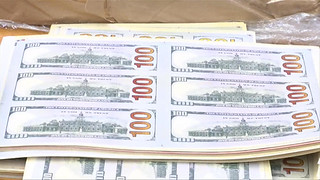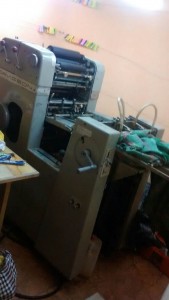
PREV ARTICLE
NEXT ARTICLE
FULL ISSUE
PREV FULL ISSUE
MORE ON THE COUNTERFEIT CURRENCY BUST IN PERUThe Washington Post has an article about that counterfeit bust in Peru that we discussed last week. It has some interesting
details of the operation's workings. -Editor
Once there, the goods are packed into parcels, loaded onto planes or hidden inside luggage, pottery, hollowed-out Bibles, sneakers, children’s toys or massive shipping containers bound for major U.S. ports of entry, such as Miami. The product’s ultimate destination, according to the U.S. Secret Service, is generally New York, New Jersey, Boston and the greater Northeast. It’s here, federal authorities say, that a few powerful organizations pass the product to splinter groups that control the streets, reaping huge financial rewards before authorities have time to react. It’s an illicit trade that bears an uncanny resemblance to narcotrafficking, and while there is some overlap between the two activities, this “product” has nothing to do with cocaine.
“It’s very similar to the drug war,” said Jose, a Secret Service agent who leads the agency’s efforts to crack down on the trade in Peru and declined to provide his last name. “The modus operandi is very similar, and a lot of the smuggling routes and the hierarchy of organizations involved are very similar, as well as the execution.” “A lot of these organizations are family-run,” he added. “Making a counterfeit note is a skill that’s been passed down. It’s an art, and the skill isn’t easily transferrable.” “It can take weeks to create a note, and they dedicate themselves to it,” he added. “They have all the people in place to finish.” That can mean as many as 10 individuals playing a role in producing a counterfeit note, from financiers, designers, printers and cutters to artists who re-create watermarks and raised textures that provide the appearance of authenticity. The entire process is “compartmentalized,” Jose said, allowing each chain in the link to remain ignorant of the others. “The person who makes the design doesn’t know the finisher or the distributor,” he said. Chavez, the Peruvian counterfeiter interviewed by the Guardian, told the paper that raw materials for making counterfeit money are “very cheap.” “I will give you an example,” he said. “A $100 bill that I sell for $20? My costs are between $3 and $5. So what’s my profit? $15. Here [in Peru], you get the supplies you need at a low cost. This glue? It costs me 50 cents. The flour, even less. . . . The paper you buy in bulk, and that costs 40-50 sols” — or $10 to $15 per stack.” Chavez echoed Jose’s description of the requisite manpower. He told the paper that it takes “about a week” to fill an order. Typically that means producing about $10,000 to $15,000 worth of fake notes, for which the buyer pays 20 percent of the face value. “To make these bills, you need 10 to 12 people,” Chavez said. “One runs the machine, there is a designer, you have someone in charge of the supplies — the paper, the inks — you need someone to cut the bills, someone outside watching. The packer. At a minimum eight people, but usually eight to 12 people for the production to come out right.” To read the complete article, see: To read the earlier E-Sylum article, see: Wayne Homren, Editor The Numismatic Bibliomania Society is a non-profit organization promoting numismatic literature. See our web site at coinbooks.org. To submit items for publication in The E-Sylum, write to the Editor at this address: whomren@gmail.com To subscribe go to: https://my.binhost.com/lists/listinfo/esylum All Rights Reserved. NBS Home Page Contact the NBS webmaster 
|

